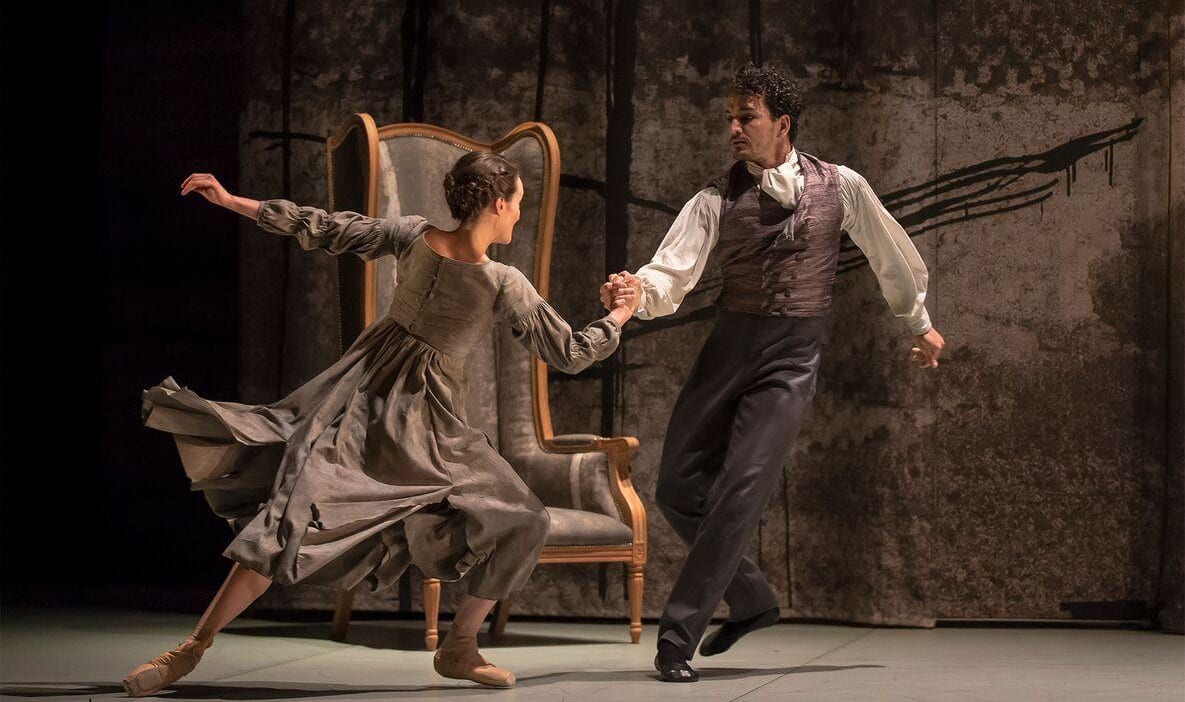One of the most famous passages in Charlotte Brontë’s Jane Eyre comes when the eponymous Jane, after discovering that her fiancé Rochester has lied to her, refuses to listen to his pleas and instead declares her intention to leave: “I am no bird; and no net ensnares me; I am a free human being with an independent will, which I now exert to leave you”. Jane is notoriously strong-willed, seizing and exercising her freedom in a way which made many Victorian readers of the novel uncomfortable when it was first published. It would be easy, in creating a ballet based on Brontë’s text, to ignore this and focus instead on the love story between Rochester and Jane – with no dialogue, there is only limited room for Jane to express her fierce independence, and we tend to expect our ballerinas and their characters to conform to traditional ideas of beauty, femininity, delicacy (just as the Victorians expected of their literary heroines).
Northern Ballet’s production of Jane Eyre, thankfully, does not do this. The Jane they offer us is a complex self-reliant character, whose strength of character is evident through her physicality – her fists are often clenched, ready to defend herself at any given moment, and she sometimes visibly asserts control over her own body, by pushing her shaking legs and hands back into place when emotion threatens to overwhelm her. The part is danced by Brooks-Daw, as Young Jane, before Blow takes over; both are excellent in the role, using shared gestures to provide a sense of continuity while both bringing something of their own to the character. While Young Jane is – rightfully – always on the defensive, fiercely protecting herself from the blows of her relatives and schoolteachers, Blow’s older Jane is calmer and more in control.
As in the novel, the motif of the double is central to the ballet – not only in the dual casting of Jane, but in the contrasts between Jane and Bertha, Rochester and St. John, the cruelty of Jane’s family and the kindness of strangers. Kinmoth’s staging draws this out beautifully, taking advantage of different levels and depths to offer multiple perspectives: at several points, both Janes are on stage together; at another, Jane dances alone in her room, while the silhouette of Bertha performs many of the same movements behind a curtain. There are also several impressive group scenes – the “D-Men” who haunt Jane, and the girls at Lowood school, moving in sync with one another, further serve to highlight the themes of commonality and individuality.
Beginning in medias res, after Jane’s departure from Rochester’s house, the production foregrounds the idea that Jane’s life revolves around men. In the prologue, she is haunted by the “D-Men”, male ghosts who trip her up and disrupt her journey; after collapsing, she is found and rescued by St. John. Despite this, though, she retains that spark of independence – particularly in the final scene, which, although it is a pas de deux with Rochester, very clearly takes place on Jane’s terms. The romance between them is beautifully enacted by Blow and Torres, but this is ultimately not a love story; it is the story of Jane Eyre.

